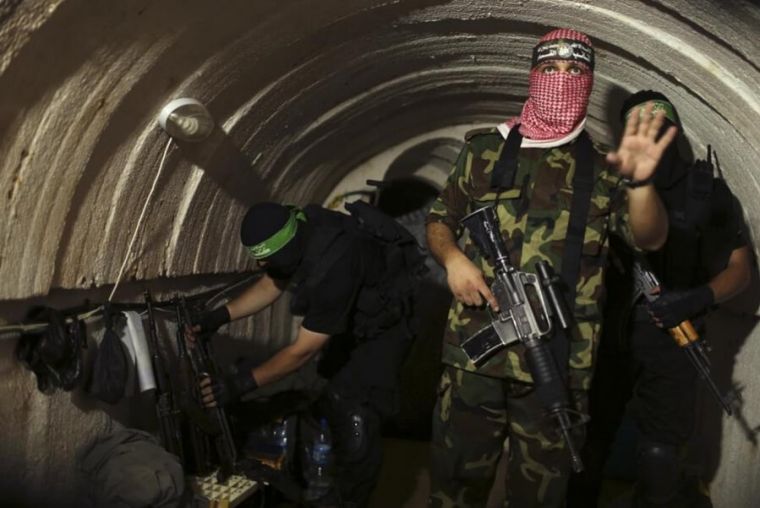Underground ISIS terror: Kurds discover vast network of 40 tunnels under retaken Iraqi city

The extremist group Islamic State (ISIS) has gone underground, literally.
ISIS militants were found to have built an elaborate tunnel system under the Iraqi city of Sinjar, complete with sleeping quarters and electricity.
The tunnels were discovered by Kurdish forces who reclaimed the city located in northwestern Iraq after more than a year of ISIS rule. The Associated Press obtained exclusive videos showing the tunnels.
Shamo Eado, a commander from Sinjar from the Iraqi Kurdish fighters known as peshmerga, described to NBC News the vastness of the ISIS' network of underground tunnels.
"We found between 30 and 40 tunnels inside Sinjar. It was like a network inside the city," Eado said.
Aside from being living quarters, the tunnels also functioned as the ISIS' shield against increasing airstrikes, and as a place for storing weapons.
"Daesh [another name for ISIS] dug these trenches in order to hide from airstrikes and have free movement underground as well as to store weapons and explosives. This was their military arsenal," Eado said.
True enough, American-made cartridges and bomb-making tools were seen in the videos scattered inside the ISIS-made tunnels.
A wide array of other things were spotted inside the tunnels, indicating frequent activity: copies of the Muslim Holy book Quran, painkillers and antibiotics.
Rows of sandbags line sections of the walls, showing how the terror group deals with airstrikes.
The tunnels, although narrow, can fit a person while standing up. They were believed to have been painstakingly carved from rocks using jackhammers, usually starting and ending in walls of houses.
Lina Khatib a senior research associate at the Arab Reform initiative, explained that these tunnels have long been part of the ISIS' strategy to defend themselves.
"This has been part of ISIS' strategy from the very beginning. ISIS has been well prepared for this kind of intervention," Khatid explained.











